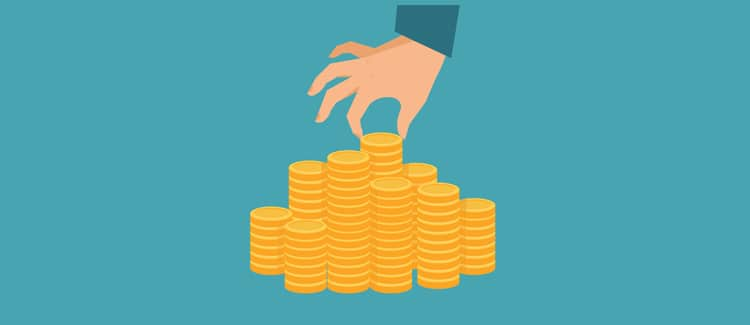KVP Interest Rate
KVP(Kisan Vikas Patra) is a popular investment option, offering an attractive and one of the highest interest rates among the many savings schemes in India. The current KVP Interest Rate is 6.9% p.a. which changes periodically based on the announcements made by the Ministry of Finance.
What is KVP or Kisan Vikas Patra?
Introduced in 1988 by the Indian Post, Kisan Vikas Patra (KVP) is a savings certificate scheme that encourages small savings over the long term among the masses for securing their future. KVP is a fixed rate small savings scheme that doubles your investment after a pre-decided tenure (currently 124 months). The KVP certificates can be purchased from Indian post offices and selected public sector banks. A minimum of Rs.1000, and any sum in multiples of Rs.100 is to be deposited for opening a KVP account, with no maximum investment limit.
Initially, KVP was launched for Indian farmers but can be availed by all now. The Government also reintroduced the scheme in 2014 after it was closed in 2011, making PAN Card submission compulsory for investments above Rs.50, 000 in it. In addition to this, income proof is made mandatory for investments higher than Rs.10 lakhs. This was done to curb mismanagement and prevent the scheme from being used for money laundering.
Types of KVP Certificates
-
Single Holder Certificate - Issued to an eligible individual for self/behalf of a minor/minor.
-
Joint ‘A’ Certificate – Issued to two eligible individuals, payable to both holders jointly or survivors.
-
Joint ‘B’ Certificate – Issued jointly to two eligible individuals, payable to either of the joint holders or the survivors.
Kisan Vikas Patra Eligibility Criteria
-
Applicant age > 18 years.
-
Should be a citizen of India
-
A minor cannot purchase KVP. However, an adult > 18 years is eligible to purchase a KVP certificate on behalf of a minor in their name or jointly by two individuals (refer to Types of Kisan Vikas Patra certificates).
-
A trustee can purchase a KVP certificate.
-
Non-Resident Indian (NRI) and Hindu Undivided Family (HUF) cannot invest in the KVP scheme.
KVP Interest Rate
For the financial-year 2020-21, the KVP Interest Rate was fixed at 6.9% on April 1, 2020. As stated earlier, the Finance Ministry sets the KVP Interest Rate, which does not consider market risks on KVP Investments. Its interest rate is reviewed by the Government quarterly and gets compounded annually. The current KVP interest chart and that for the preceding five financial years are shown below for a better understanding of the interest rates.
|
Quarter |
Current Financial Year |
Preceding Financial Years |
||||
|
Months |
2021-2022 |
2020-2021
|
2019-2020 |
2018-2019 |
2017-2018 |
2016-2017 |
|
April-June |
6.9% (maturity 124 months) |
6.9% (maturity 124 months) |
7.7% (maturity 112 months) |
7.3% (maturity 118 months) |
7.6% (maturity 113 months) |
7.8% (maturity 110 months) |
|
July-September |
6.9% (maturity 124 months) |
6.9% (maturity 124 months) |
7.6% (maturity 113 months) |
7.3% (maturity 118 months) |
7.5% (maturity 115 months) |
7.8% (maturity 110 months) |
|
October-December |
6.9% (maturity 124 months) |
6.9% (maturity 124 months) |
7.6% (maturity 113 months) |
7.7% (maturity 112 months) |
7.5% (maturity 115 months) |
7.7% (maturity 112 months) |
|
January-March |
To be announced |
6.9% (maturity 124 months) |
7.6% (maturity 113 months) |
7.7% (maturity 112 months) |
7.3% (maturity 118 months) |
7.7% (maturity 112 months) |
Disclaimer: Policybazaar does not endorse, rate, or recommend any particular insurer or insurance product offered by an insurer.
*The investment risk in an investment portfolio is to be borne by the policyholder
Example Showing How KVP Interest Accrues And Doubles the Investment
KVP is one of the safest, secure, and low-risk savings schemes in India. KVP interest is calculated based on the principle of compounding. The formula, as seen below, is the same as the formula for computing compound interest.
A = P (1 + r/n) ^ (nt)
Where,
A – Maturity Amount
P - Principal
R - Rate of Interest
t- Investment Tenure
n - Number of Times Interest gets compounded during the investment tenure
For instance, for an investment of Rs.1000, at the current KVP interest rate of 6.9% p.a., it will take 124 months for your amount to get doubled.
A simple calculation table has been provided below to help you to understand how KVP interest accrues and investment gets doubled at maturity.
|
Number of Years Active (Duration) |
Amount Repaid (Rs.) |
|
> 2.5 years < 3 years |
1173 |
|
> 3 years < 3.5 years |
1211 |
|
>3.5 years < 4 years |
1251 |
|
> 4 years < 4.5 years |
1291 |
|
>4.5 years < 5 years |
1333 |
|
>5 years < 5.5 years |
1377 |
|
>5.5 years < 6 years |
1421 |
|
>6 years < 6.5 years |
1467 |
|
>6.5 years < 7 years |
1515 |
|
>7 years < 7.5 years |
1564 |
|
>7.5 years < 8 years |
1615 |
|
>8 years < 8.5 years |
1667 |
|
>8.5 years < 9 years |
1722 |
|
>9 years but before KVP certificate maturity |
1778 |
|
On maturity of KVP certificate |
2000 |
Disclaimer: Policybazaar does not endorse, rate, or recommend any particular insurer or insurance product offered by an insurer.
*The investment risk in an investment portfolio is to be borne by the policyholder
Key Features and Benefits of Kisan Vikas Patra
-
Guaranteed Return on Investment
Being a government-backed savings scheme, KVP assures an investor a high return on investment over the long term, irrespective of the market rate fluctuations.
-
Financial Security
KVP is not subject to market risks as it is one of the safest savings schemes available. The investors can ensure their financial security by getting an accumulated corpus on the maturity of the scheme.
-
Compounded Interest
KVP interest rate gets compounded annually, entailing more returns on your deposit.
-
Tenure
The current KVP maturity tenure is 124 months, for which interest will continue to accrue over the accumulated corpus, giving better returns to the investor over time.
-
Exemption from TDS
On completion of maturity of the KVP certificate, there is no tax deducted at source (TDS) from the maturity proceeds. The tax benefit is subject to changes as per tax laws.
-
Loan Against KVP
KVP certificates can be used as collateral against a secured loan by the investor at a lower rate of interest.
Summing It Up!
KVP is especially beneficial for investors who have surplus funds, are risk-averse, and are looking for suitable returns.
˜Top 5 plans based on annualized premium, for bookings made in the first 6 months of FY 24-25. Policybazaar does not endorse, rate or recommend any particular insurer or insurance product offered by any insurer. This list of plans listed here comprise of insurance products offered by all the insurance partners of Policybazaar. For a complete list of insurers in India refer to the Insurance Regulatory and Development Authority of India website, www.irdai.gov.in

- SIP Calculator
- Income Tax Calculator
- Compound Interest Calculator
- NPS Calculator
- Show More Calculator















